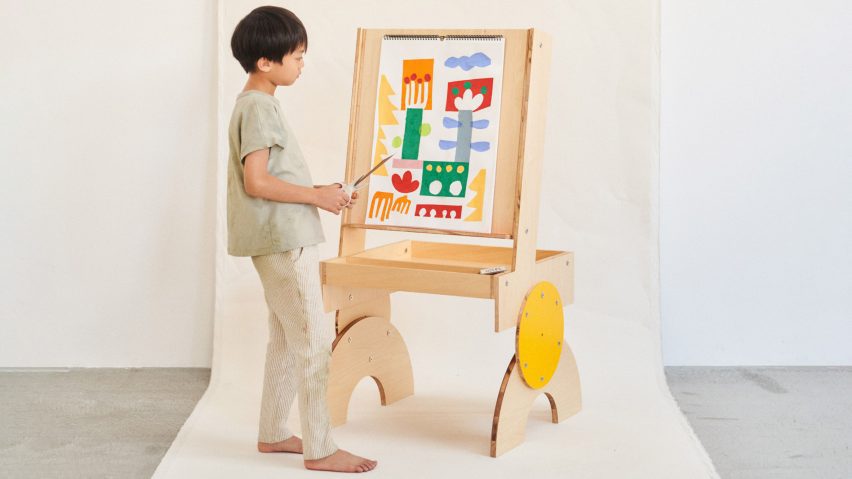
Woset creates pared-back art supplies to kickstart children's imagination
Glue made from rice, crayons that draw on any surface and a stool that turns into an easel are among the unconventional craft equipment developed by Tokyo children's brand Woset for the next generation of artists and designers.
Woset's stationery and furniture, recently on show as part of a pop-up at the Isetan department store in Shinjuku, is wholly made in Japan with a purposefully minimal "greige" look that diverges from traditional kids' products.
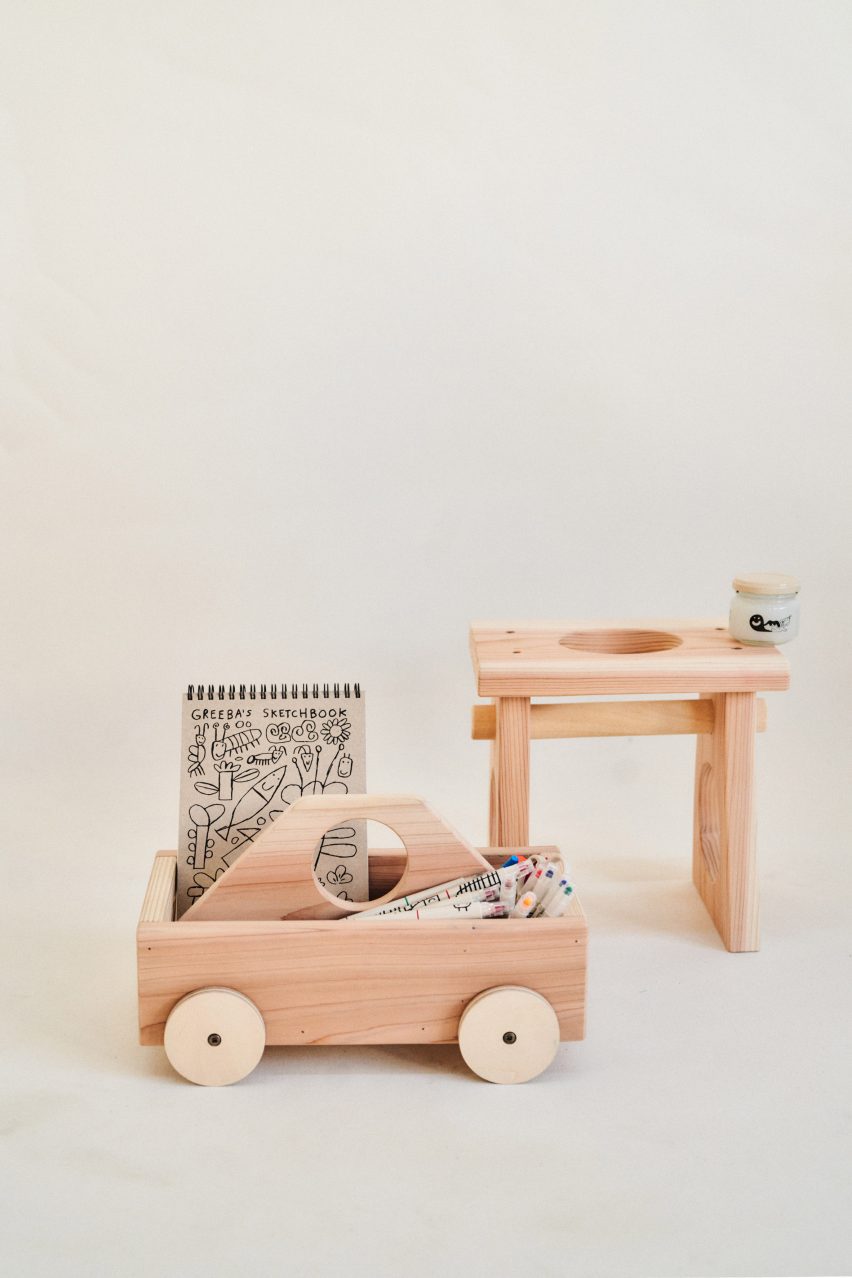
"It's pared back so you don't have to be pared back," explained designer Brad Holdgrafer, who co-founded the company with his wife Jenna. "You can do whatever you want with it: you can colour it, you can break it, you can smash it, you can rip it."
"That sense of responsibility builds creative confidence, which is really what we hope to do as much as possible," he continued.
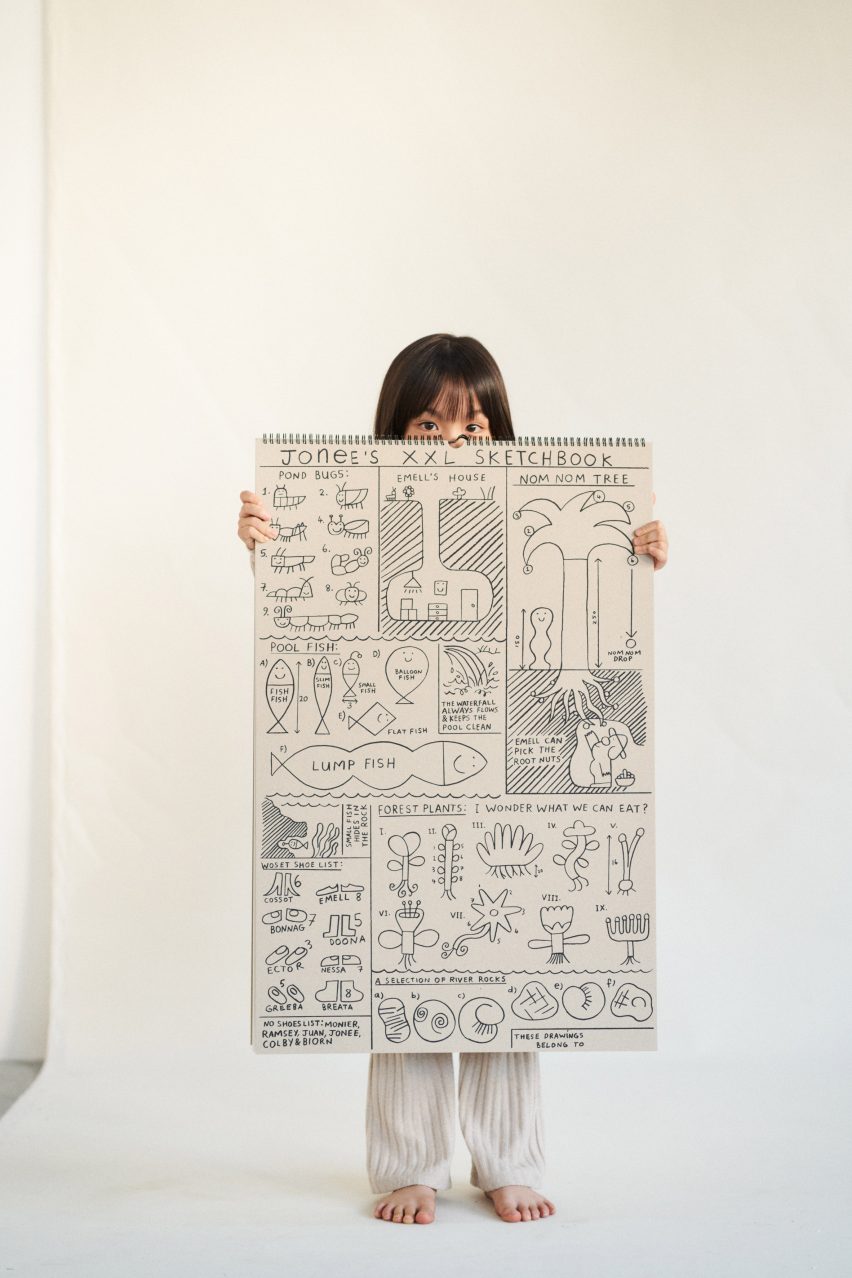
The Holdgrafers, also known as the husband-and-wife duo behind LA design store Formerly Yes, founded Woset after moving to Tokyo with their children Leo and Georgia in 2022.
While the furniture was designed by prominent studios including Keiji Ashizawa Design, Waka Waka and Torafu Architects, the ideas behind the products are based on the couple's own observations of their children – and how their creative process differs from that of adults.
Woset's giant sketchbook – almost the size of a doorway when unfolded – was informed by how kids will draw over the edges of the page and onto the table if a piece of A4 is too small to hold their ideas.
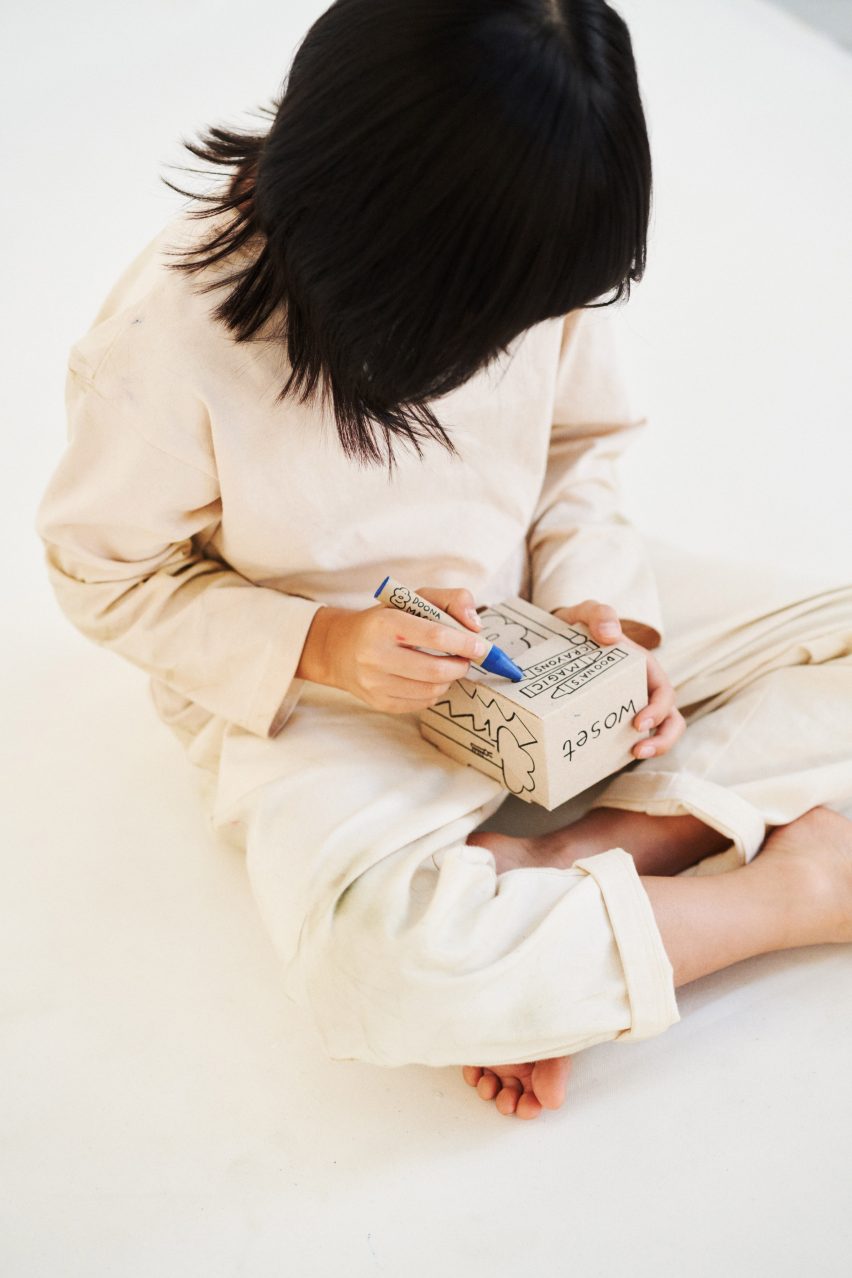
This is accompanied by a "magic crayon" that can draw on any surface but is easy to wash off, according to Holdgrafer, as it is made from rice bran wax instead of petroleum-derived paraffin.
"If you take the crayon off the pad of paper and put it on glass, they come up with all kinds of new ideas they may have never thought about before," he said.
"So it's about how the product itself can change the environment in which the kids are making art so they really start to think: I never knew I could do this."
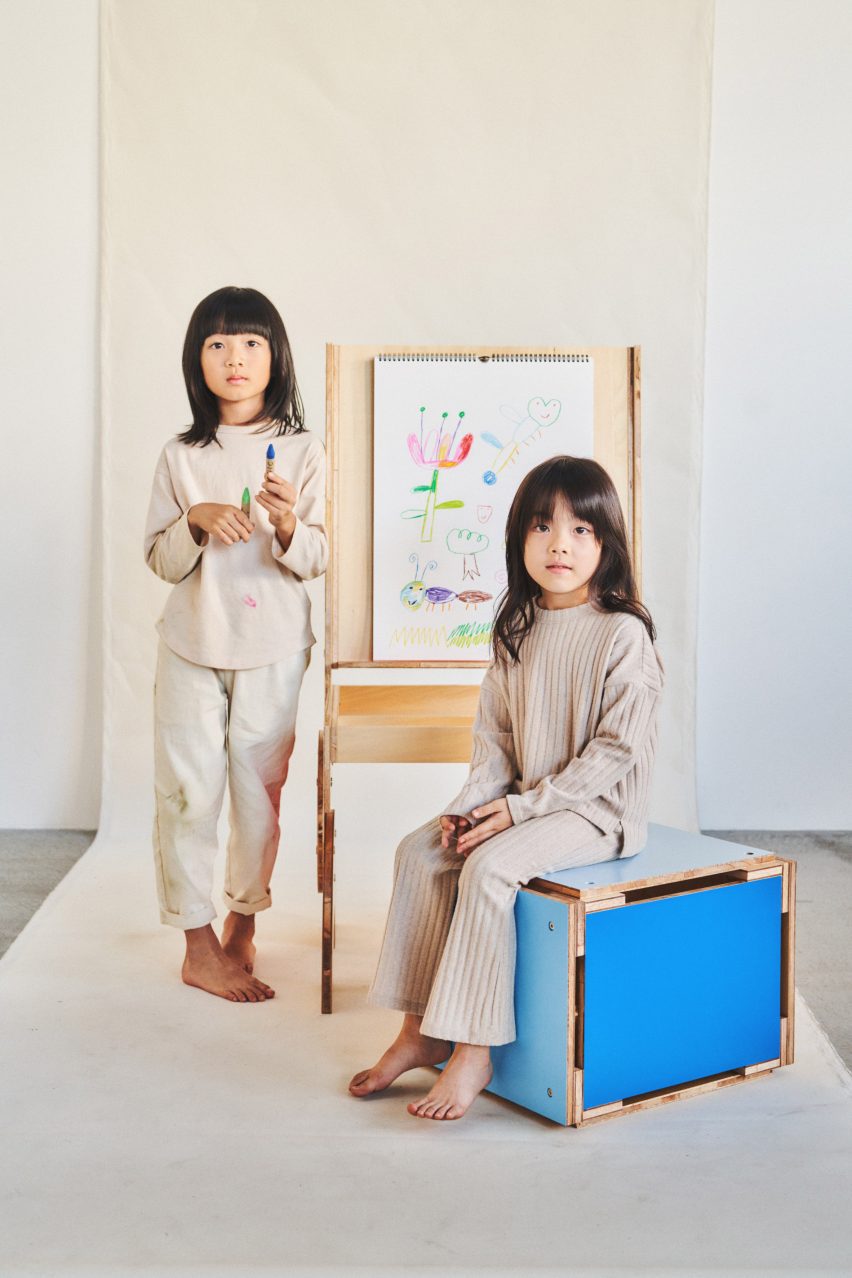
To grab children's fickle attention, Woset worked with Shin Okuda of LA studio Waka Waka to create a blocky plywood easel that's eye-catching enough to be a part of the furniture rather than something to be stowed away.
"Kids are so spontaneous," Holdgrafer said. "If they see something they've got to play with it."
"So we thought: could we make an easel that you can't put in a closet? So you physically couldn't put it in a closet because it's pretty big," he continued. "But also you wouldn't want to, hopefully, because it's so interesting and fun."
To quell inevitable fights over who gets to use which marker, Woset created a "snap-and-share" version that can be split into five separate mini-markers with smash-proof rounded felt tips.
Like all Woset products, the marker is associated with one of "13 and a half" different original characters, brought to life by British illustrator Jay Cover, in the hope that children will form an emotional connection to the products.
In this case, each breakaway section of the giant marker is decorated with a different tiny insect to illustrate the value of working together to achieve a larger goal.
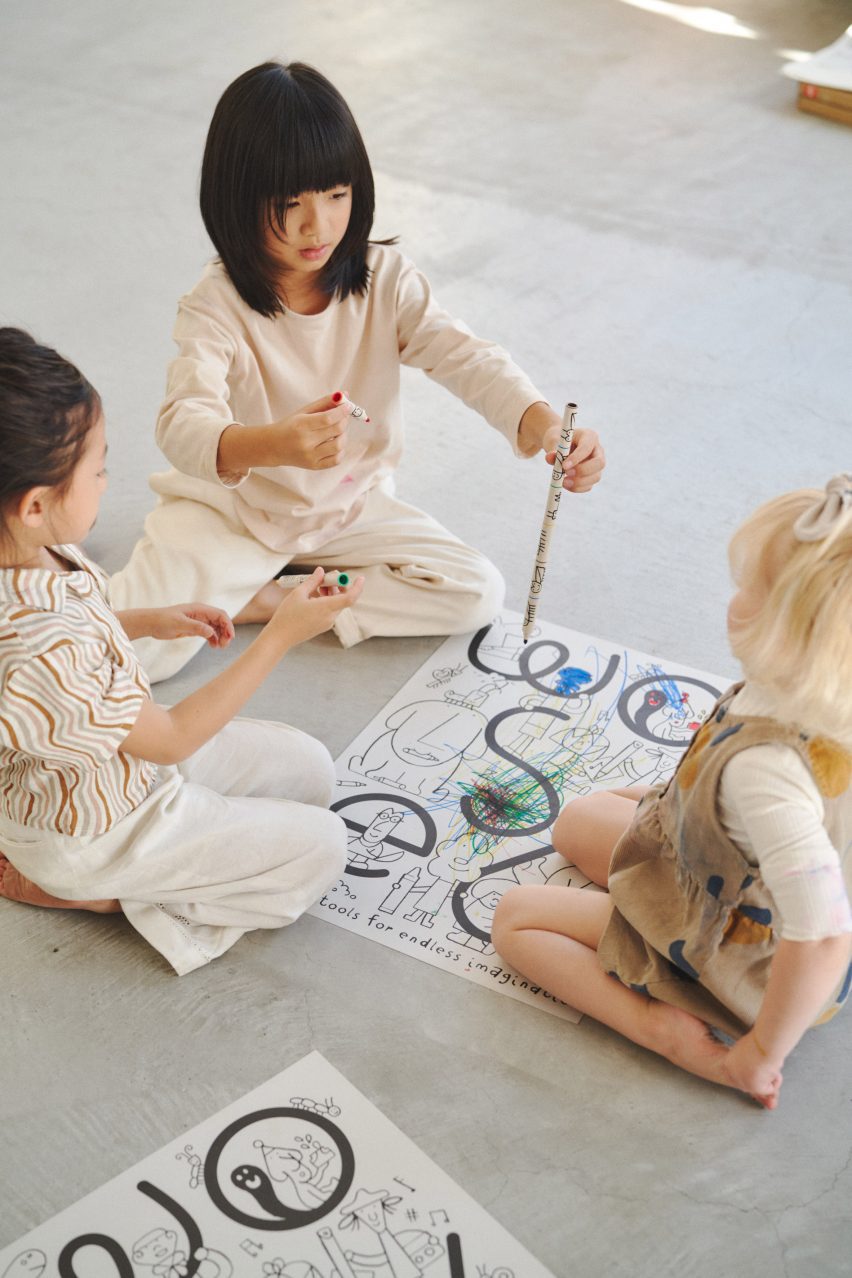
"We want to have as much depth as Lord of the Rings almost in how we're building the character lore," Holdgrafer said.
"And once they're interested in the characters and the story, then maybe they'll want to use the products," he added. "Otherwise, it's really hard for a well-designed, smart, thoughtful children's toy to compete with Hello Kitty because Hello Kitty is so compelling."
The brand's recycled paper packaging is completely devoid of colour and instead topped with outlines of the different characters for kids to colour in.
"Even our trash, even our packaging – something we usually throw away – becomes a colouring book," he said.
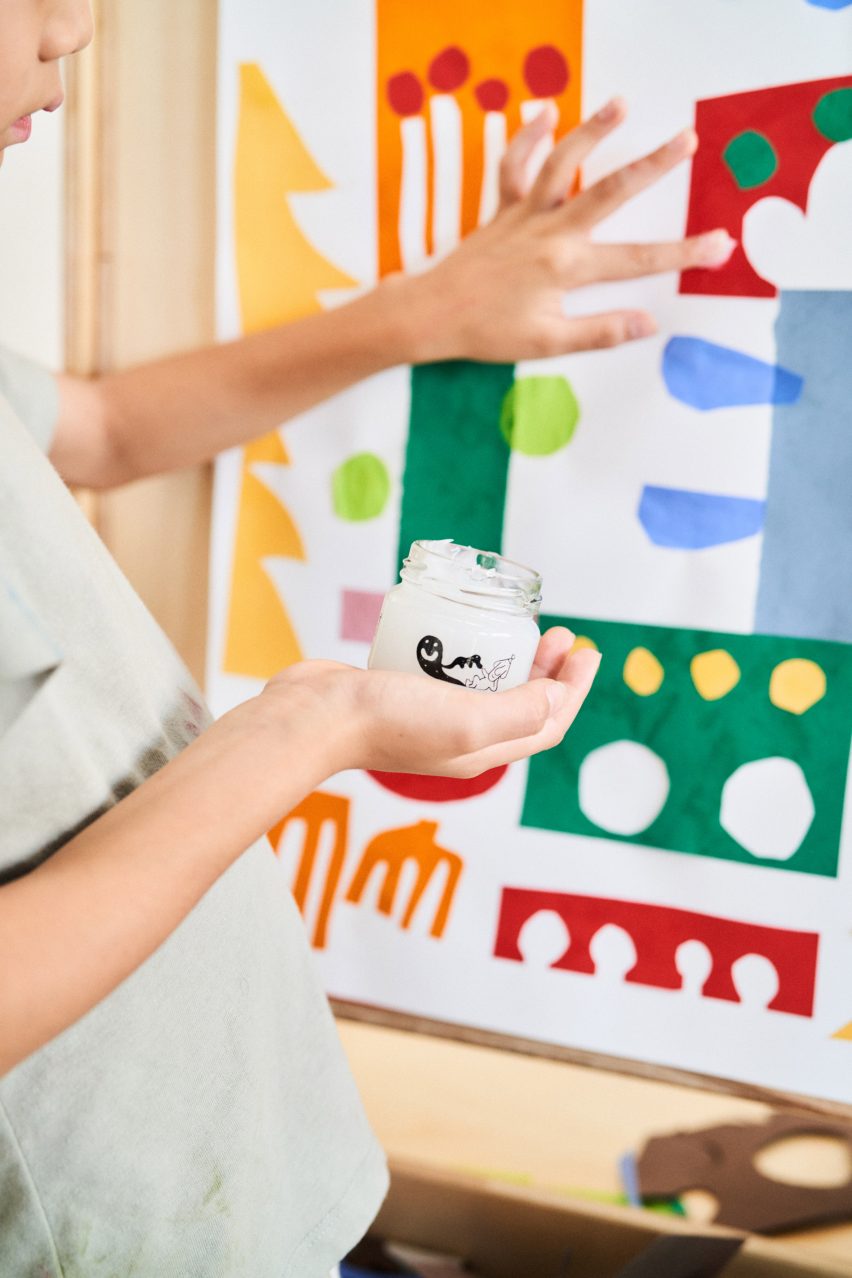
All of the company's products are made locally, in collaboration with small manufacturers across Japan. The glue, for example, comes from a family-run glue factory that dates back almost 200 years.
Made from tapioca rice starch and packaged in a refillable glass jar, the adhesive is all-natural and technically edible – although Holdgrafer doesn't advise passing this on to the children.
Woset also created a capsule collection in collaboration with furniture workshop Ishinomaki Laboratory, including an adaptation of Torafu Architects' A-frame stool that turns into an easel just by moving a dowel.
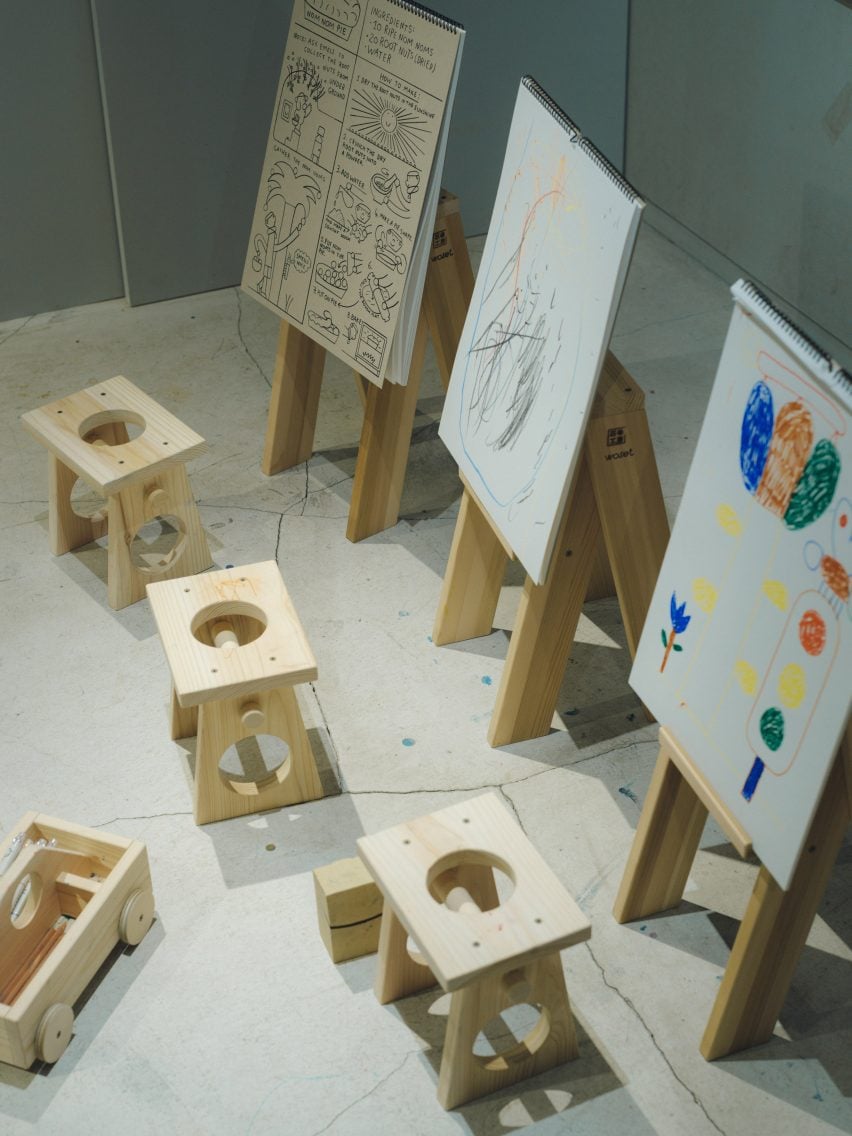
The architecture practice also contributed a car-shaped toolbox on wheels to complement a stool by Keiji Ashizawa, which has a crossbar that doubles as a handle so that kids as young as 11 months old can move the piece around without needing help from adults.
"Kids always want to slide your furniture all over the house," Holdgrafer said. "And we thought: what if we can make something that they can just move themselves really easily if they have an idea?"
The company isn't alone in its goal to nurture children's creative independence. Elsewhere, designers have created self-assembly furniture and sew-your-own clothing kits to show kids how they can have a hand in shaping the world around them.